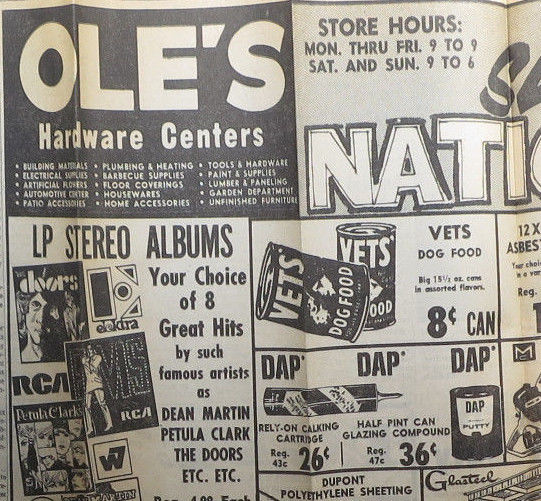
La Puente Valley Journal Feb 1969 Oles Hardware TG&Y Rosemead California Continue reading Ole’s, Rosemead, 1969
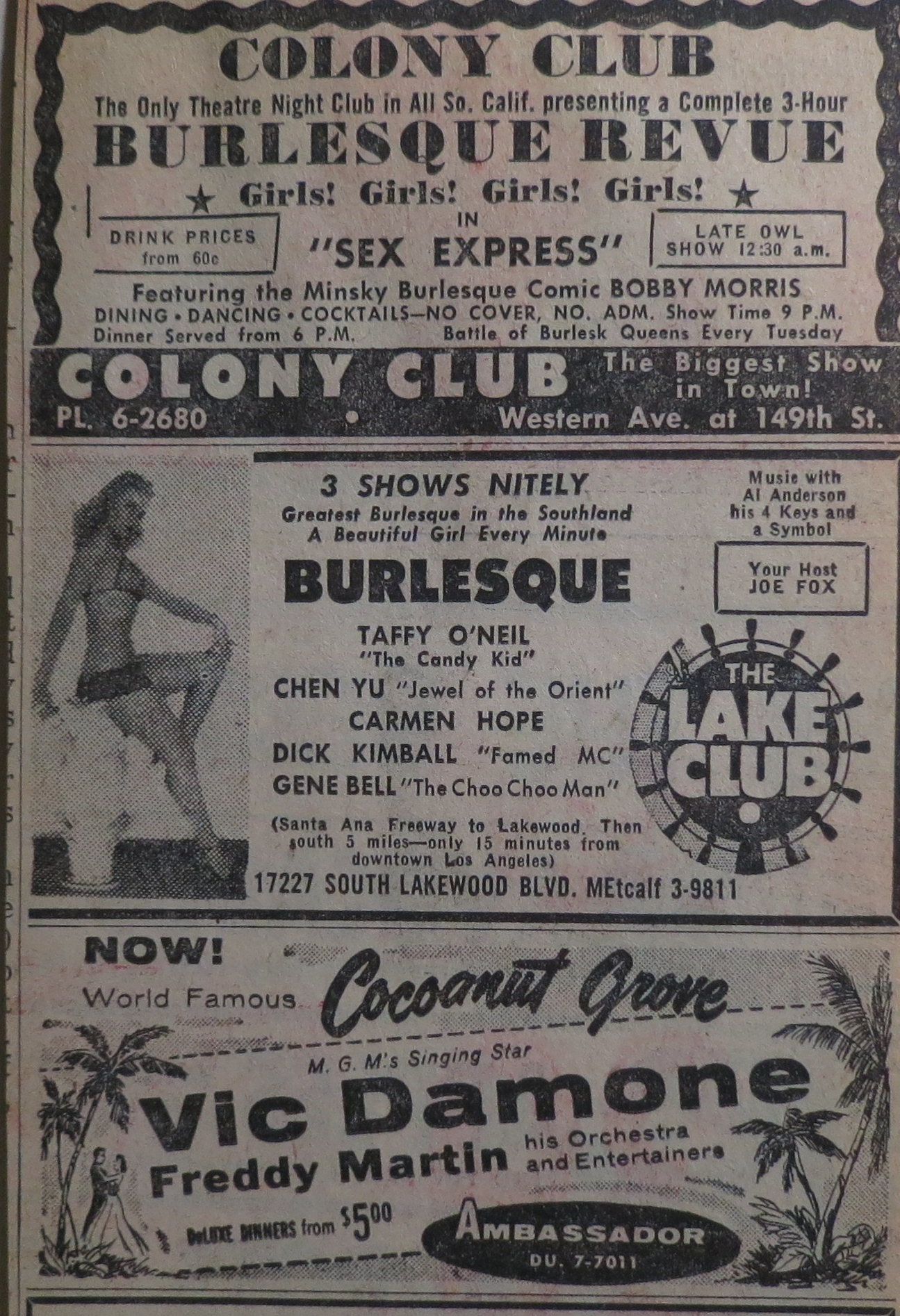
This ad is from the mid 1950s. I could find no information at all about Chen Yu. Here’s a photo I found on Pinterest. Continue reading Chen Yu, Jewel of the Orient, at the Lake Club Burlesque in Bellflower, CA
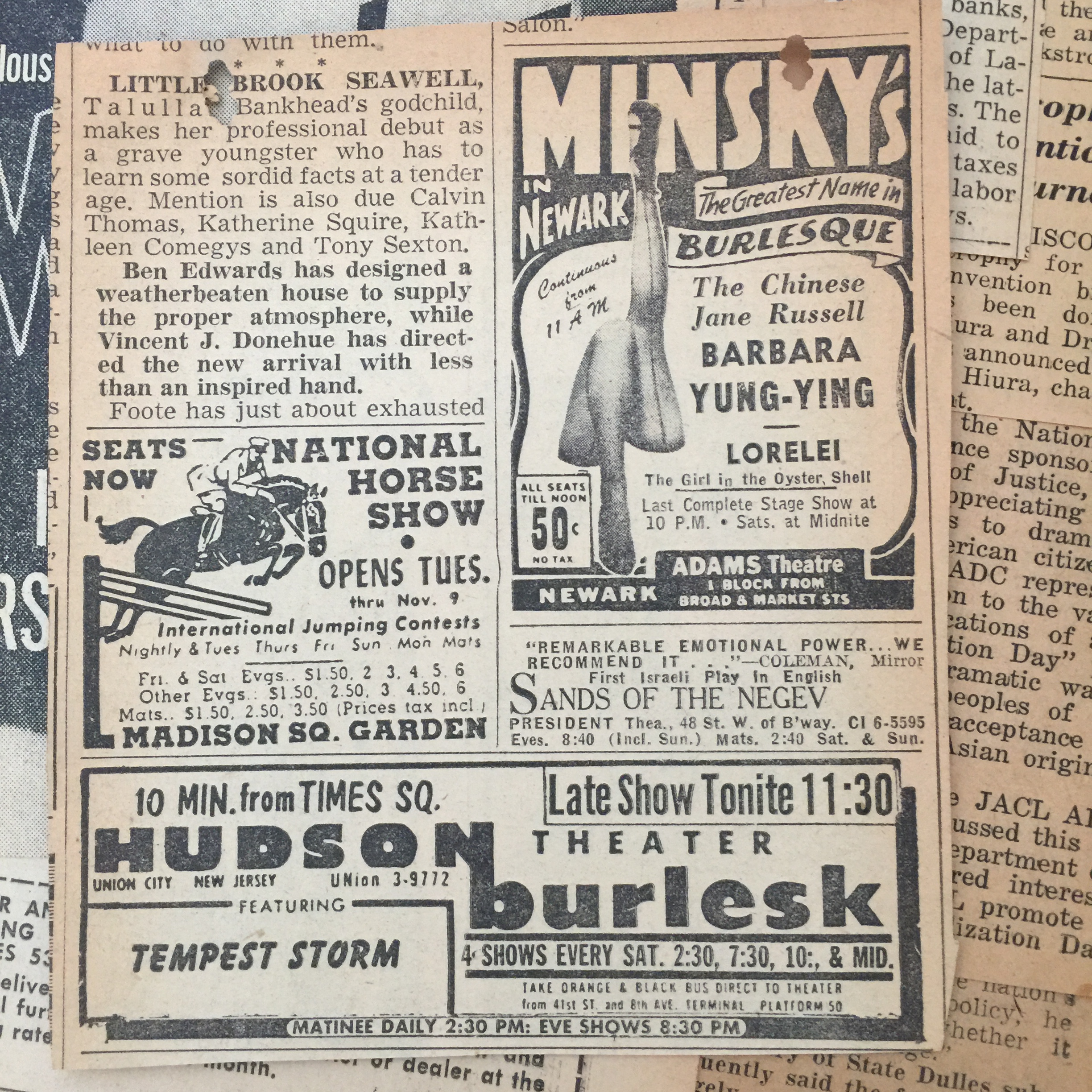
My father was born in Union City, NJ, and lived his first few years in Newark, so that might be a reason why he kept this ad, in addition to the fact Barbara Yung-Ying must have been one of the few Asian burlesque dancers in the 50s. Read more info about Minsky’s.
Continue reading Barbara Yung Ying at Minsky’s Burlesque in Newark at the Adams Theater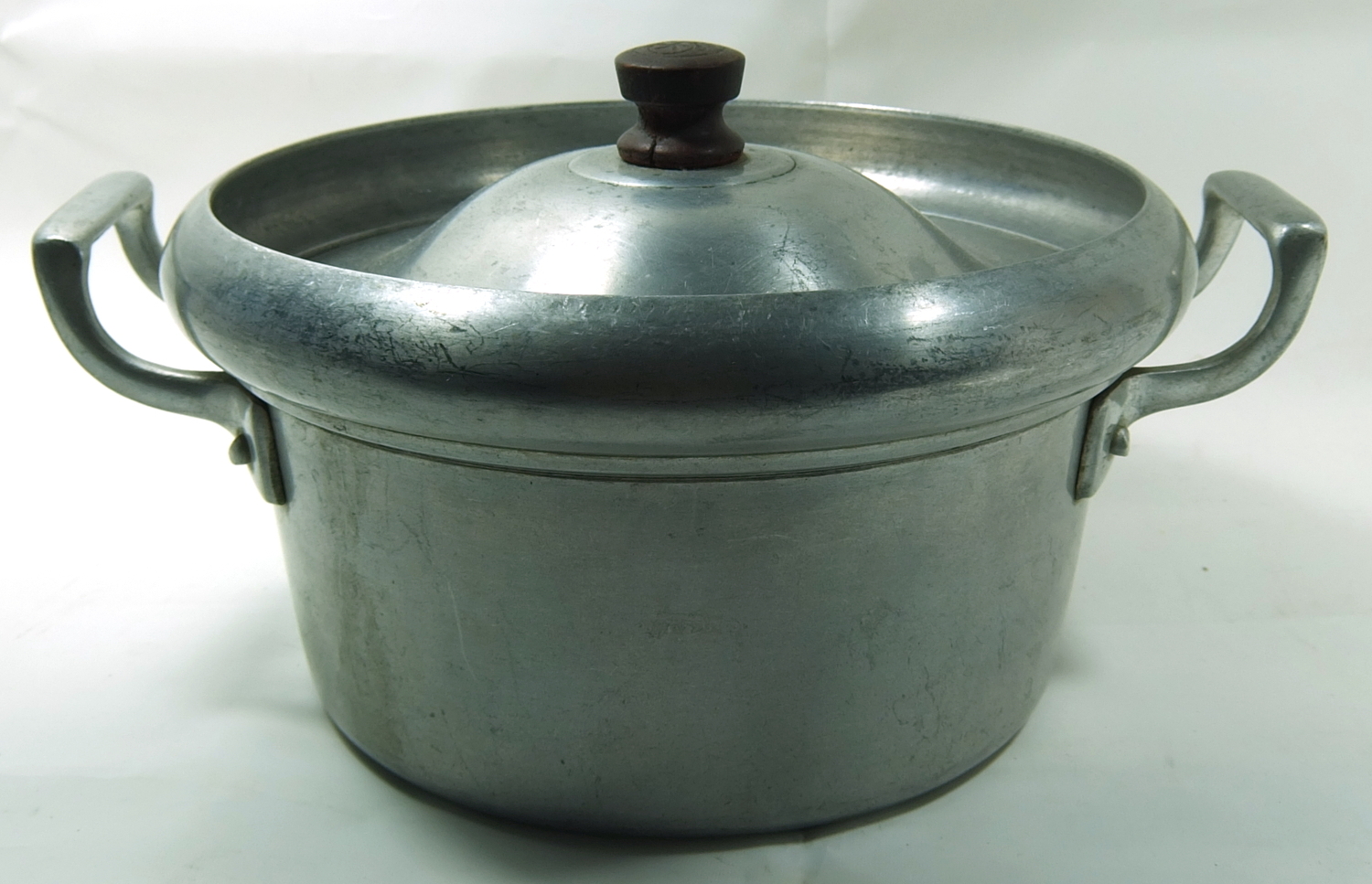
This is an old rice pot. Estimated to be from the 1950s.
This was not part of a rice cooker. To use it, it was put over heat. The rim and lid were designed so that starchy, boiling water would not overflow down the sides. The lid is shaped like a cymbal, so that the handle wouldn’t be submerged by the boiling water.
This was verified for me by my mother, who immediately identified it as a rice pot and explained its use.
The logo on the lid is the kanji for “ooki” meaning “large”. The animal appears to be a tiger. The handle is made of wood. This does not appear to be the Tiger brand company.
The only indication of its COA is the word “Japan” stamped on the handle. It does not say “occupied Japan”, so I would assume that it’s post-occupation (after 1953). Also, because it’s stamped, I would assume it was intended for export.
See The Status of the Aluminum Industry in Japan by Eiki Usui to learn about the history of the aluminum business in Japan. According to aluminum.or.jp, the first Japanese aluminum industry associations formed in 1947, so that industry was a postwar phenomenon. This isn’t entirely correct. There was a previous aluminum industry, starting in the late 1800s, before WW2, and it collapsed. Smelting aluminum was started only in 1930. Presumably, pre-1930 aluminum products were rarer.
I have found only one product similar: an aluminum pot from 北陸アルミ (Hokua Alumi) in the Hokuriku district in western Japan. (The district my mother was from.) The product is being sold as Showa retro, though it’s new. (The price is around $30, so this item sold at a premium, but not a significant premium if one wanted to import a new pot from Japan.)
The automatic rice cooker, which we now consider the main “rice pot” people use, was invented in 1955 by Toshiba. So the period in which this was produced was probably relatively short.
Also, the market for this item in the US was small. In 1950, the Asian American population was 321K people.
So, it’s been basically impossible for me to find an equivalent rice pot online. The current retro rice pot trend in Japan is to go back to ceramic pots and wooden containers, and is reflective of a trend toward artisinal foods.
昭和レトロ, Showa retro, means vintage goods from the Showa era 1926 to 1989, but mainly focuses on postwar era objects made in Japan, as well as US objects that were common in the postwar era. It’s not the same as vintage Asian or vintage Japan, in that it’s not “chinoiserie” or “japanoiserie” of Japan-themed goods, designed to evoke the East, made for non-Japanese markets. Rather it’s about the continued modernization of Japan in the postwar era.
PS – after reading about the aluminum industry, I had to wonder if this was cast rather than spun. Spun means that a block of aluminum, or a molded aluminum piece, is rolled and stretched into shape.
Once this is partially restored, it’ll sell for $13 plus shipping. I don’t think I can fully restore it without risking some damage to the paint. If you’d like to get it directly, for le$$, contact me via the contact page.
Note: the sleep button doesn’t seem to work 🙁
Continue reading Restoring a 1980s Digital Alarm Clock Radio: the General Electric P’Jammer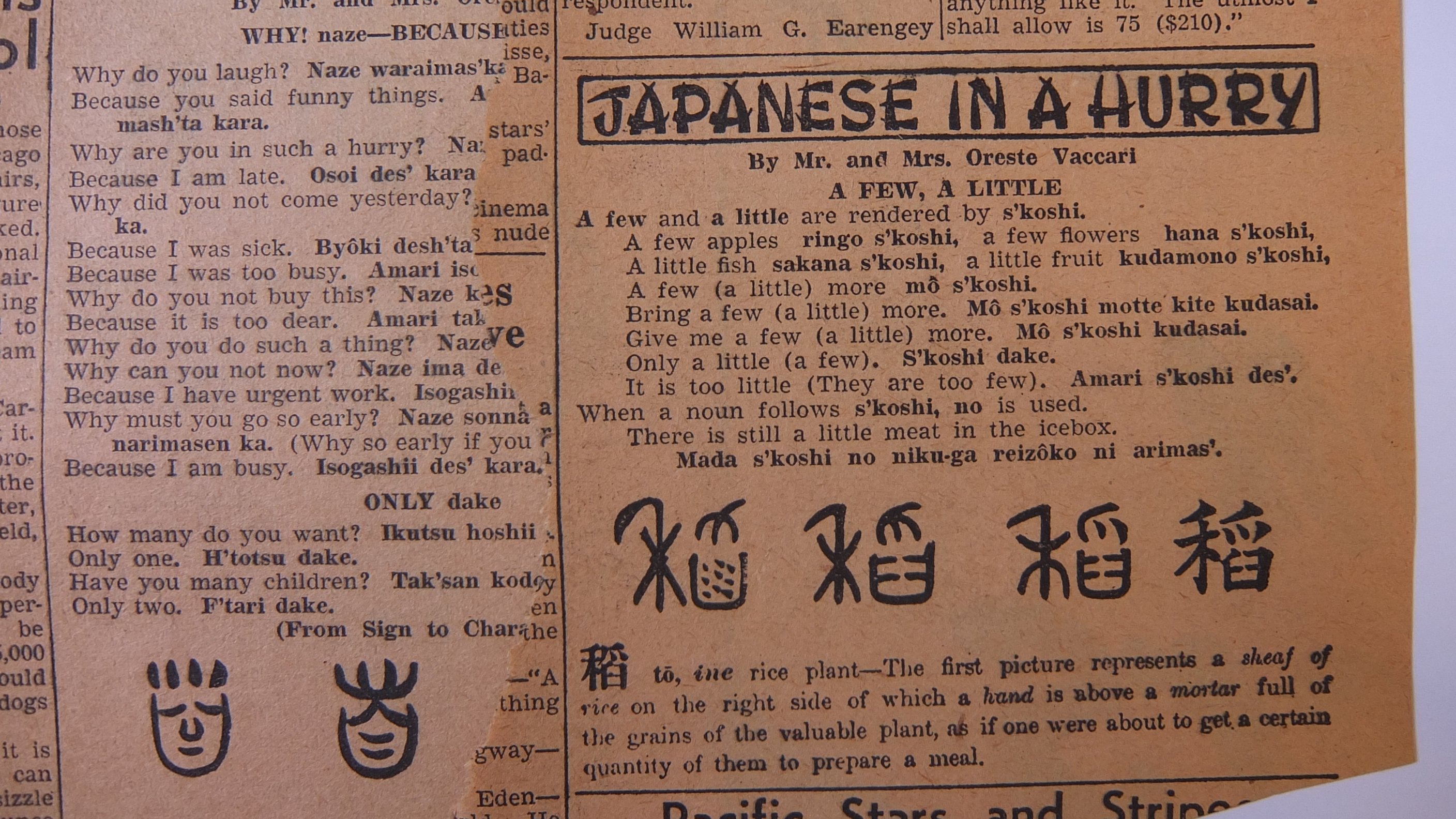
The currrent assumption is that the word was brought over from Japan during the postwar era, when the US occupied Japan. People returning from the Occupation would know a little bit of Japanese.
The above picture from Pacific Stars and Stripes, a military newspaper, had a column, Japanese n a Hurry, teaching Japanese to military foreigners working in Japan. I found this in my family collection of random paper from the past. If you’re interested in this kind of think, you can dig around this website. I sell some of the stuff online, and at zombiesoftheinformationsociety.com.
The borrowed word rhymes with “squash”.
The Japanese pronunciation is su-koh-shee. It’s three syllables. As you say it faster, it sounds like s’kohshi. Japanese doesn’t have any accents, and each syllable gets the same emphasis.
スコシ, 少し, すこし
I was unable to find the etymology of the words. Using the online translators at Bing and Google, most attempts to translate ended up finding words, around Asia, that sounded more like the Japanese word “chotto”. Turkish and Indonsian translations had “s” sounds: küçük, sedikit.
This is a description I wrote to a fb comment:
It's a digital collectible. You can buy a URL that will show you a picture, and it shows up on the blockchain proving that you paid money for the URL. You can also resell the URL. It's kind of like buying some genuine Louis Vuitton, and showing it off, except, there's no "thing". Also, the people you are showing off to are, basically, other people who bought LV. And each LV item is slightly different. But they are all genuine, no fakes. Also, it's artwork, but typically, it's a computer doing some automated copy-pasta to produce a picture, based on a library of artist-created parts. Kind of like Colorforms or Mr. Potatohead. The technical details are: * blockchain - a shared ledger of transactions * coin - unit of currency used to conduct transactions * token - aka coin, a piece of data that represents value * non-fungible token (NFT) - a token that's unique, similar to a URL, but also represents some value, like real estate Coins, tokens, NFT, are created through software that runs on the blockchain. The blockchain is a database that can also run code. The database is supported by a network of computers that replicate the entire database, using technologies that allow many unrelated parties to participate in the project. This stuff is popular with capitalists, for many reasons, but mainly because they think it'll create a system that allows money to be exchanged without central banks or governments.